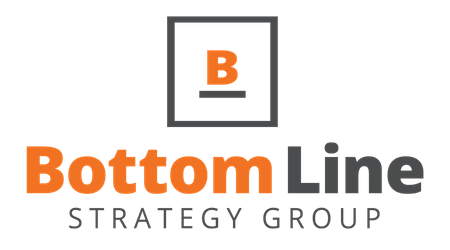Digital Transformation Strategies for Business Success: Implementation Tips and Trends
Digital transformation is no longer optional, it's essential. A conscious analysis of current issues, market requirements, and emerging technologies can identify potential gains from digitization. For instance, did you know some businesses unearth 50% or more operational efficiency after a thorough digital makeover? This implies that successful evolution rides on how well we understand our existing processes and customer needs. Now, imagine stepping onto a clear path towards your digital future.
The key strategies for successful digital transformation include starting with a clear outcome-focused approach, ensuring complete alignment across the organization, and operating with an agile and resilient mindset. By adopting these strategies, businesses can navigate the complexities of digital transformation while maximizing their chances of success.

Author: William Flaiz
Pinpointing Digital Transformation Motives
At the heart of every successful digital transformation journey lies a foundational understanding of why such a significant shift is necessary. Identifying the motives behind embarking on a digital transformation initiative involves thoroughly examining the current state of affairs within an organization. Pain points, market demands, and emerging technologies all play pivotal roles in steering this decision-making process.
Pain Points Analysis: First and foremost, it's essential to take stock of current pain points and inefficiencies within the business processes. These could range from manual, time-consuming tasks that are ripe for automation to outdated systems that hinder agility and innovation. Thoroughly examining these pain points reveals areas that are prime candidates for digitization and optimization.
Market Demands Evaluation: In parallel, a keen eye must be kept on evolving market demands and customer expectations. As consumer behaviors continue to shift toward digital interactions and seamless experiences, businesses need to adapt in kind. Identifying how digital transformation can enhance the customer journey and create value for both the business and its customers becomes a critical aspect of the motive-finding process.
Consider a retail company grappling with declining foot traffic in physical stores but witnessing a surge in online sales. This evident shift in consumer behavior signals an urgent need for digital transformation to reorient the business strategy towards e-commerce capabilities and personalized digital engagement.
By conducting a thorough assessment of existing business processes and customer needs, organizations gain powerful insights into where they can derive maximum value through digitization efforts. Furthermore, this process also uncovers opportunities for innovation and differentiation in an increasingly competitive landscape.
This gives organizations the ability to articulate clear motives for embarking on their digital transformation journey, having identified pain points, evaluated market demands, and recognized the potential impact of emerging technologies.
With a solid understanding of the motives behind digital transformation, it's time to set sail on a voyage towards charting a clear path for this transformative journey.
Charting a Clear Digital Transformation Journey
Defining clear objectives is essential when embarking on a digital transformation journey. It's like setting sail on a ship without a destination in mind - you need to know where you're going and why. This involves outlining the specific goals and objectives of the transformation effort. Do you want to improve customer experience, streamline operations, or innovate your products and services? These objectives will serve as guiding stars throughout your transformation journey, ensuring that every decision and action contributes to these overarching goals.
Defining Clear Objectives
To further elaborate, let's consider an analogy: Imagine you're planning a road trip. Before you set off, you need to decide where you want to go - this is like defining your digital transformation objectives.
It could be reaching a picturesque lake or visiting an exciting city. Similarly, in business, your objectives could be centered around enhancing customer satisfaction or optimizing internal processes. Without clarity on these objectives, your transformation efforts may lose direction and purpose, leading to wasted time and resources.
Creating a Roadmap
Once your objectives are well-defined, the next step is to create a roadmap for the digital transformation process. A roadmap acts as your navigational tool, plotting out the route from where you are now to where you want to be. It should include key milestones, timelines, and responsibilities - think of it as marking the towns you'll pass through, estimating the travel time between them, and delegating driving duties among your travel companions.
For this purpose, project management tools like roadmapping software and an organized agile sprint and backlog tracking Kanban board software are a must. A roadmap visualizes the sequence of key activities and their respective timelines, helping in understanding the order of tasks and their interdependencies. The Kanban board keeps you focused on the activities to succeed and keeps you progressing toward your goal.
In essence, creating a roadmap facilitates better planning and execution of the transformation process. Just as having a clear itinerary ensures a smooth and organized road trip, an effective roadmap enhances visibility into the transformation journey, allowing for proactive adjustments and coordinated efforts across teams.
With clear objectives guiding the way, a well-designed roadmap paving the path forward, and a robust backlog on your Kanban board, businesses can confidently embark on their digital transformation journey towards sustainable success.
Guided by these foundational principles, businesses can now shift focus towards assembling agile and capable teams to drive their digital transformation efforts forward.

Assembling a Resilient Digital Transformation Team
You can think of a digital transformation team like an orchestra – each instrument plays a vital role in creating the desired harmony. Similarly, assembling a team for this journey requires careful consideration of skill sets, traits, and diverse perspectives essential for successful digital transformation.
Skillset Mapping
To start, identify the skills and expertise needed for the digital transformation journey. This may include data scientists, software developers, UX/UI designers, and change management specialists. Each member should bring unique value to the table, contributing their specialized skills to the collective effort. Data scientists play a key role in unlocking insights from data, while software developers bring technical proficiency to execute digital initiatives. UX/UI designers ensure that the end-user experience is intuitive and valuable, and change management specialists guide the transition process smoothly. By carefully mapping out these critical roles, you ensure that your team has all the necessary components to drive meaningful change.
For instance, consider a scenario where your organization plans to implement an AI-driven customer service chatbot, having team members with AI programming skills, natural language processing expertise, and user interface design capabilities becomes imperative for success.
Cross-functional Collaboration
In addition to specialized skills, ensure representation from various departments to foster cross-functional collaboration and gain diverse perspectives. Communication, problem-solving, and adaptability are key traits to seek when building a digital transformation team. A cross-functional approach allows for a holistic view of the organization’s needs and challenges. This collaborative environment encourages the exchange of ideas and insights from different domains, ultimately leading to more comprehensive solutions.
Additionally, individuals with strong problem-solving abilities can navigate complex challenges associated with digital transformation initiatives. Their analytical thinking and proactive mindset can help in addressing bottlenecks effectively. Adaptability is also crucial as it enables team members to adjust to evolving project requirements and embrace new technologies and methodologies with ease.
In essence, assembling a resilient digital transformation team involves recognizing the significance of each skill set, fostering a collaborative environment, and embracing diversity of thought to drive successful digital initiatives.
With a well-assembled team armed with the right expertise and mindset for the journey ahead, it's time to chart the course for executing the digital transformation strategy.
Executing the Digital Transformation Strategy
Implementing a digital transformation strategy often involves making significant changes across the organization. It's like renovating your entire house – it can be daunting, but with the right plan and execution, the results can be transformative.
One effective approach is to start with small-scale pilot programs before rolling out changes across the entire organization. These pilot programs provide a testing ground for the new digital initiatives, allowing for adjustments based on real-world feedback. This minimizes the risks associated with large-scale implementation and provides valuable insights into what works and what doesn't. By identifying and addressing potential issues early on, you can fine-tune the strategy before scaling it up.
For example, a retail company looking to implement a new inventory management system could first test it in a few select stores before implementing it company-wide. This approach allows the company to identify operational challenges, train employees on the new system, and make necessary adjustments before a full rollout.
The success of these pilot programs relies on careful planning, clear success criteria, and active participation from all stakeholders. It's important to establish specific goals for each pilot program and gather feedback from employees who are directly involved in testing the new digital tools or processes.
In parallel with integrating new tools and processes, change management becomes pivotal in ensuring a smooth transition for employees. Change management involves providing adequate training and support to employees as they navigate the changes brought about by digital transformation.
For instance, as your organization shifts from traditional project management methods to agile methodologies, your teams will need training and support to understand new workflows, tools, and communication channels. Addressing resistance to change is essential as it can hinder progress. A culture of continual learning needs to be fostered within the organization. This means helping employees see change as an opportunity for growth rather than a threat.
To facilitate this cultural shift, highlight success stories from within your organization where previous changes have led to positive outcomes. Encourage open communication channels so that employees feel heard and valued throughout the transition process.
Effectively orchestrating these changes takes time and effort, but it lays the foundation for successful digital transformation within your organization.
As we navigate through the intricate landscape of digital transformation strategies, one can't help but acknowledge the profound influence of organizational culture on this dynamic process. Let's now delve into how shaping business culture paves the way for seamless digital transformation.
Shaping Business Culture for Digital Transformation
In an era of technological advancements, fostering a conducive business culture is pivotal for seamless digital transformation. When top-level leadership understands, supports, and promotes the change, it sets the tone for the rest of the organization. The alignment of leadership with the digital transformation strategy is essential; it not only serves as a guide but also as an inspiration for every level of the organization.
The commitment of top leadership is critical for garnering support and resources for digital initiatives, ensuring that the digital transformation strategy is endorsed at all levels and acted upon effectively. When leaders actively promote a culture of innovation and adaptability, it encourages employees to embrace change and align their efforts with the strategic vision. For instance, when employees see executives openly embracing new technologies or methodologies, they are more likely to feel encouraged to do so themselves. This kind of cultural endorsement ensures that all members of the organization understand the importance and value of digital transformation, making it a concerted effort across all functions.
Empowering employees with a platform to contribute ideas and feedback fosters a culture of innovation, digital literacy and fluency, and agility throughout the organization. When employees are recognized and rewarded for their digital initiatives, it not only encourages active participation but also motivates them to think creatively about how technology can improve processes and drive better outcomes. Recognizing employee contributions also serves as an acknowledgment of their commitment towards the organizational goals. This recognition creates a sense of belonging and encourages a greater depth of engagement in technological shifts, creating an environment where everyone feels valued and equally responsible for driving the digital agenda.
| Key Aspect | Importance |
|---|---|
| Empowerment | Encourages creativity and innovation |
| Recognition | Motivates active participation |
| Feedback | Fosters a culture of continuous improvement |
In many cases, it's not entirely about asking employees to learn new tools but rather empowering them to choose and learn these new tools by involving them in the selection process. Furthermore, enabling cross-functional teams to work together on innovative projects can significantly elevate business outcomes.
| Key Aspect | Impact |
|---|---|
| Top level support | Sets strategic direction |
| Alignment with strategy | Guides organizational efforts |
| Inspiration | Encourages commitment |
Ultimately, shaping business culture for digital transformation involves active leadership alignment and cultivating an engaging environment where every member feels valued and vested in the organization's digital journey.
Assessing the Success of Digital Transformation Efforts
When pursuing digital transformation, having clear KPIs is akin to having a map - it guides you in the right direction and indicates how far you've come. Key Performance Indicators (KPIs) serve as crucial benchmarks, allowing organizations to gauge the impact and effectiveness of their digital initiatives.
Establishing these KPIs ensures that businesses are tracking relevant metrics that connect to their overall goals. These could encompass various aspects such as:
- Customer Satisfaction
- Productivity Gains
- Cost Reductions
- Revenue Growth
By setting these KPIs and continually monitoring them, organizations can thoroughly evaluate the impact of their digital initiatives and make informed decisions about what adjustments may be necessary along the way. It's like driving a car - your speedometer helps you stay within safe limits; similarly, KPIs help keep you on track during digital transformation.
Additionally, implementing effective feedback mechanisms is integral to proactively evaluating and refining digital transformation efforts. Feedback Mechanisms provide a platform for gathering insights from employees, customers, and other stakeholders regarding their experiences with new digital tools and processes.
Gathering Insights
Utilizing surveys, focus groups, suggestion boxes, and regular feedback sessions can offer valuable insights into the impact of digital transformation on different aspects of the business. Employee satisfaction, customer needs, and operational challenges are just some of the dimensions that these feedback mechanisms can shed light on.
Continuous Evaluation
Continuous evaluation through these mechanisms facilitates a dynamic approach to refining digital strategies. It nurtures an environment of ongoing improvement by accommodating real-time feedback and making iterative enhancements based on user experiences.
By combining well-defined KPIs with robust feedback mechanisms, organizations can comprehensively gauge the impact of their digital transformation efforts and tailor their strategies for sustained success.
Ready to take a glimpse into what lies ahead in the ever-evolving landscape of digital transformation? Let's venture into exploring "Navigating Future Trends in Digital Transformation" to chart our course forward.
Navigating Future Trends in Digital Transformation
The landscape of digital transformation is ever-evolving, with emerging technologies like artificial intelligence (AI), blockchain, and the Internet of Things (IoT) playing pivotal roles in reshaping business operations. Staying ahead of these future digital transformation trends can be the difference between thriving as a business and being left behind in the wake of technological advancements.
Let's start with artificial intelligence. AI has set new benchmarks for businesses across various industries, from automating repetitive tasks to analyzing large datasets for actionable insights. Implementing AI solutions can enable businesses to make data-driven decisions, enhance customer experiences, and optimize internal processes. Furthermore, the potential for AI to revolutionize personalized marketing efforts cannot be overstated.
Now onto blockchain, its decentralized and secure nature has transformed traditional transactions and record-keeping processes. Businesses can utilize blockchain technology to streamline supply chain management, enhance cybersecurity measures, and ensure transparency in financial transactions. Decentralized finance (DeFi) and non-fungible tokens (NFTs) are also areas where blockchain is making significant strides.
In the realm of Internet of Things (IoT), interconnected devices and sensors have empowered businesses to gather real-time data and create seamless integrations across various operations. From smart manufacturing processes to connected smart homes and cities, IoT presents opportunities for increased efficiency, improved monitoring capabilities, and innovative product offerings.
Keeping abreast of these industry trends and innovations is paramount for sustained digital transformation success. By providing thought leadership content, reports, or webinars on future digital transformation trends, businesses can position themselves as valuable resources within their respective industries. This not only showcases expertise but also fosters a culture of continuous learning and adaptation within the organization.
Embracing emerging technologies and staying informed about future digital transformation trends is vital for businesses aiming to remain competitive in an increasingly tech-driven world. By proactively leveraging these advancements, organizations can proactively shape their digital strategies and harness the full potential of transformative technologies.
© 2024 Bottom Line Strategy Group
All Rights Reserved | Privacy Policy






